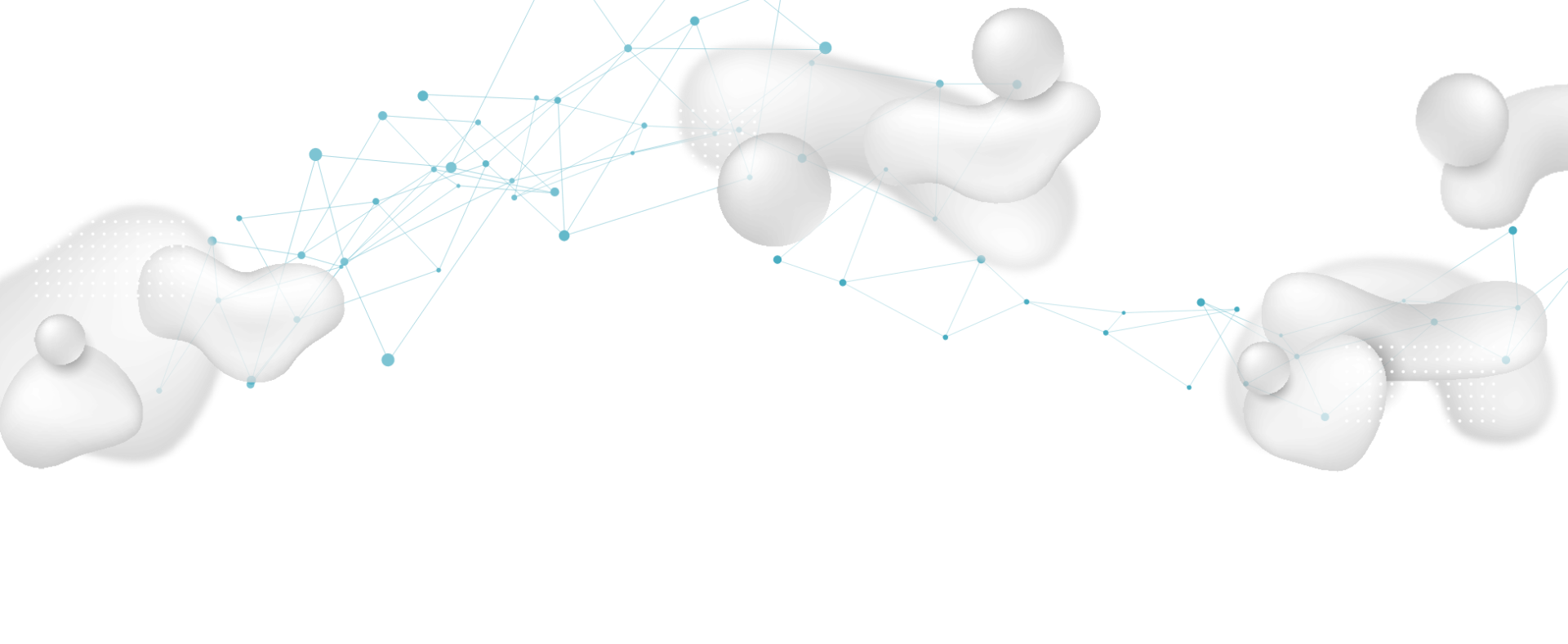Topic Overview
Research and development organization
Research and Development Project Leader
Synge Todo (Professor, Graduate School of Science, The University of Tokyo)
Participating institutions (Educational)
The University of Tokyo / Keio University / RIKEN
Participating institutions (Corporate)
Kyocera Corporation / Toppan Printing Co., Ltd. / International Business Machines Corporation / Japan Research Institute, Ltd. / Blueqat Inc. / Sumitomo Mitsui Financial Group, Inc.
Characteristics of this topic
Tensor decomposition
- Decomposing large tensors (with many legs) into a product of small tensors (with few legs)
- Tensor ⇒ Tensor decomposition ⇒ Tensor network
- Advantages of tensor networks
- Compact representation through data compression O(exp(N)) → O(N)
- Flexibility in contraction order
- High-precision approximation based on singular value decomposition
Objective of this topic
- Quantum-classical fusion representation form
- Quantum AI on classical devices

Research Highlights
Embedding of tensor network in quantum circuits
- We have investigated methods to embed tensor network representations of quantum spin liquids into quantum circuits.
- One approach is to transform projection operators into networks of unitary matrices and embed them into quantum circuits. This method allows for the representation of quantum spin liquids with shallow quantum circuits, but we found that the efficiency decreases as the number of qubits increases.
- Starting from the wavefunction represented by a series of unitary tensors, instead of the projectors, we have also investigated its direct transformation into quantum circuits. This approach reduces the number of measurements required, but it is not possible to completely eliminate measurements, the increasing of circuit depth still remains as a challenge.
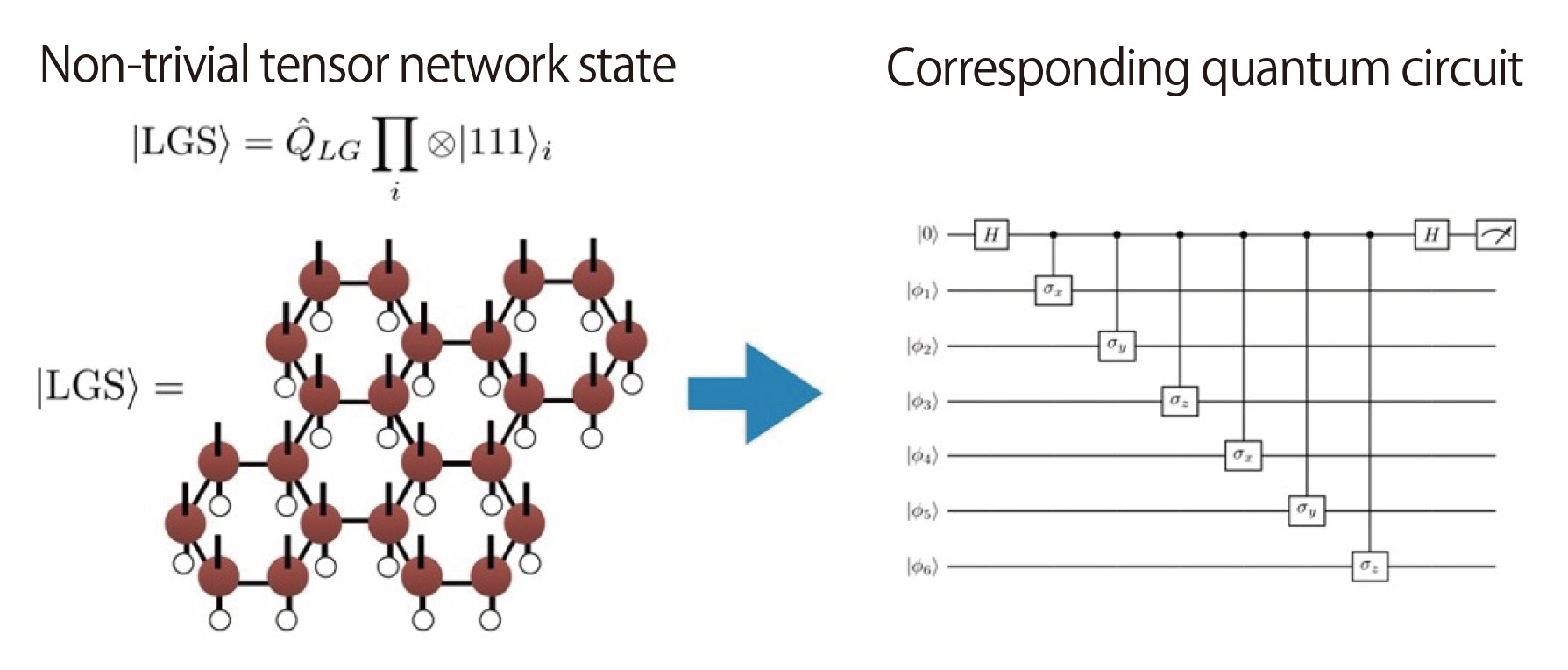
Quantum circuits and neural networks
- We conducted fundamental research on the interchangeability between quantum circuits (i.e., tensor networks) and neural networks.
- By using a deep learning model called the deep Boltzmann machine, we demonstrated that the tensor network representation of quantum circuits can be precisely mapped to the form of deep Boltzmann machines.
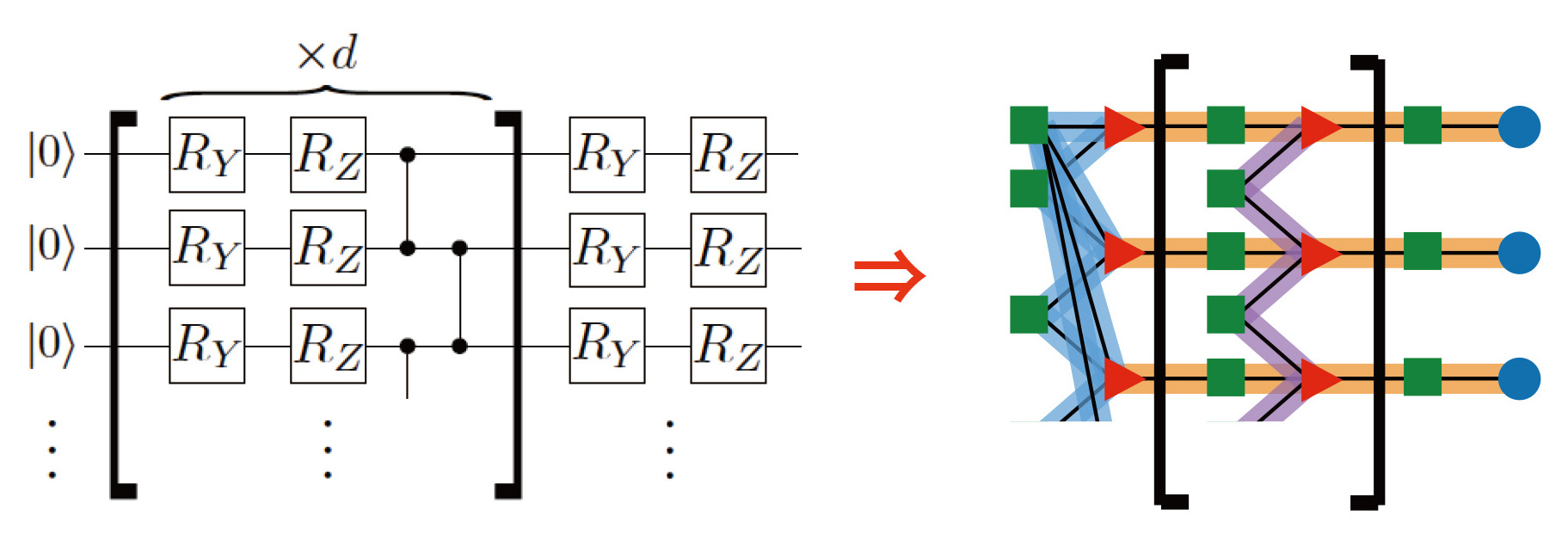
Quantum computing simulator (pTEBD algorithm)
- A quantum computing simulator has been developed based on the pTEBD algorithm for supercomputers.
- pTEBD is a computational method that exhibits weak scaling by performing unitary operations in parallel and transferring data locally.
- The algorithm also includes the implementation of measurements using projection operators.
- As a benchmark, we were able to simulate the measurement-induced phase transition that has been verified on real devices.
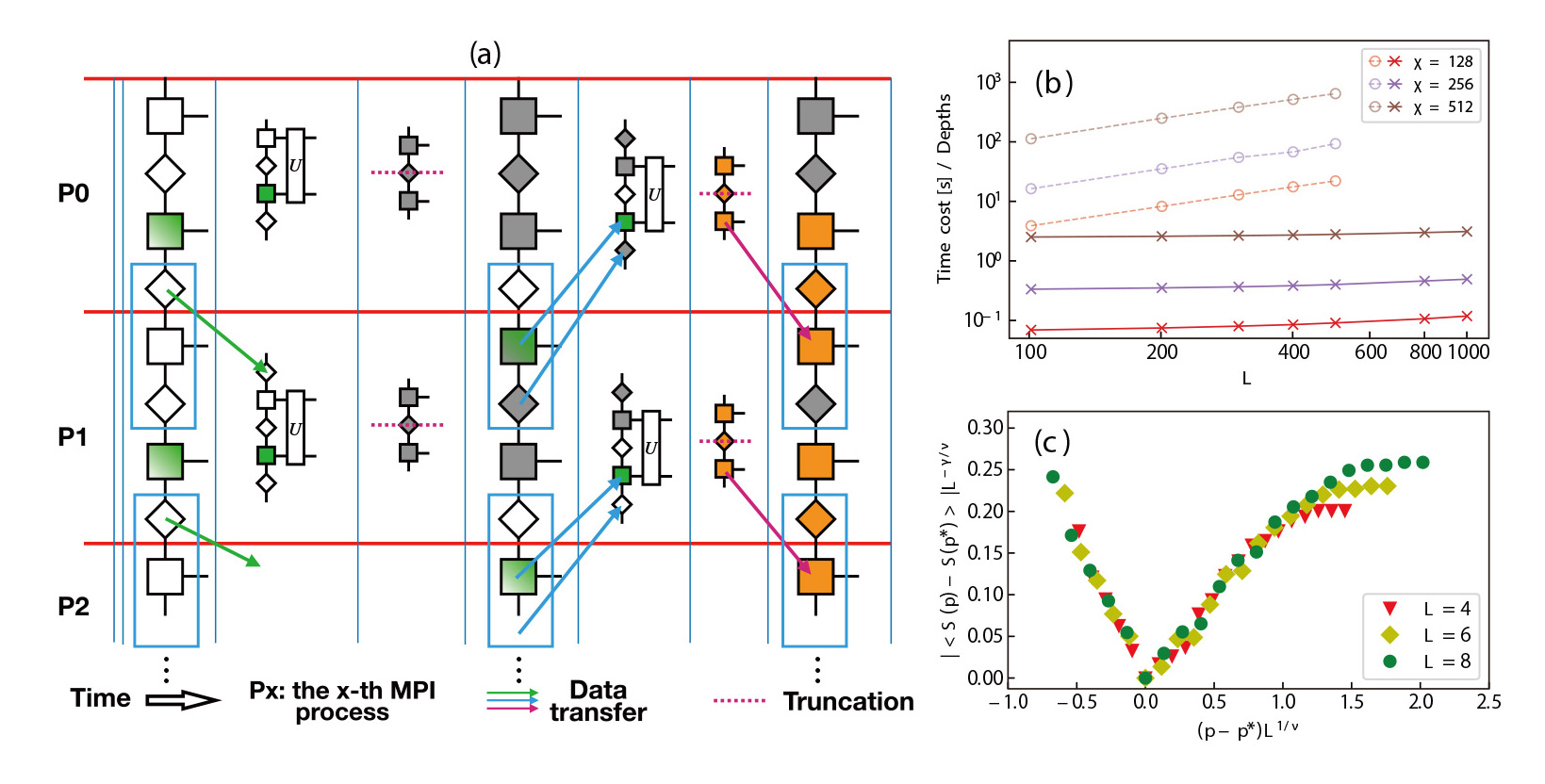
Monte Carlo and Clifford simulators
- Tensor-network Monte Carlo and Clifford simulators were developed.
- The conventional quantum Monte Carlo method is known to have the sign problem, which leads to some paths that cannot be represented with a probability.
- We have developed the Markov chain Monte Carlo sampling method for the tensor networks. This method solved the sign problem while maintaining high accuracy.
- A Clifford simulator has also been developed. With this method, a circuit with around 200 qubits can be calculated within several tens of seconds.
- We are dedicated to converting tensor and neural networks and developing a method for quantum embedding in advance of other domestic or international groups.
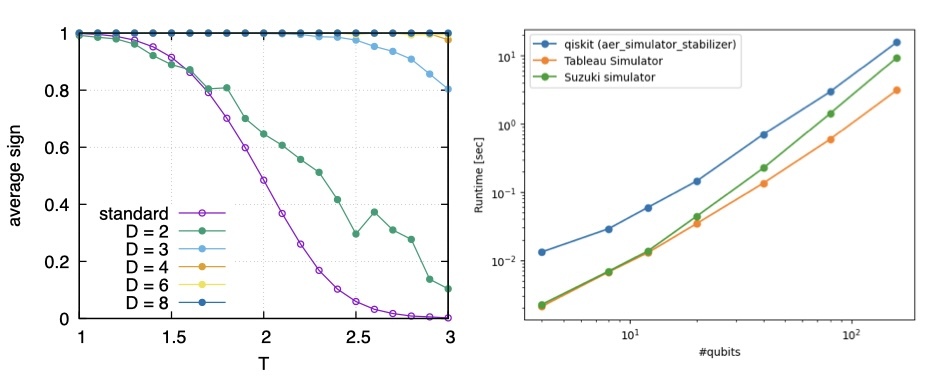
Future Prospects
- Quantum → Classical
- Development of quantum-classical correspondence formats.
- Investigation of relations among various quantum–classical correspondence formats.
- Classical → Quantum
- Development of embedding techniques from classical to quantum.
- Consolidation of both quantum-to-classical and classical-to-quantum algorithms and developing fusion algorithms that work in both directions.
- Establishing a paradigm that fuses quantum devices, quantum-classical approximations, and classical computers.
- Achieving quantum simulations with thousands of qubits.
- Realizing quantum AI predictions using classical devices, such as mobiles and laptops.
